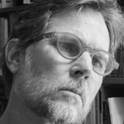In the twentieth century, more so than at any other time, media transformed architecture. No architect employed media as extensively and as consciously as did Le Corbusier in the conveyance of a modern architecture, an architecture that ostensibly privileged structure, function and material. Yet in his hands the very act of mediation served to transform architecture, de-materializing it, and eventually leading to an architecture of illusion. As a Purist painter, he believed the goal of art to be the evocation of an elevated sensation. He achieved this goal through mathematical regulation of the canvas and its contents. Such ordering resulted in ambiguous and illusory visual space, space that had a physiological effect on the viewer. He 'applied' this order to both his architecture and the image of his architecture. Photographs of buildings were made to conform to Purist vision, underscoring the illusion of representation and evoking in the 'reader' a sensation parallel to that of an ordered architecture. Such representation offered Le Corbusier new space, and he strove to translate this into a three-dimensional architecture by making representation itself into architecture. With his photo murals, photographs became walls. With his exhibition pavilions, publicity became facades. An architecture of illusion evolved which valued phenomenal sensation over the 'thing' itself. Such sensation became the essence of Le Corbusier's 1946 theory of architecture in which a synthesis of the arts would result in what he termed "ineffable space," the 'four-dimensional' equivalent of the sensation of illusion found in the Purist canvas. With illusion the basis of a new architecture, a dialectical relationship with material reality itself was established. In this way, representation served Le Corbusier not to record modern architecture, but to transform it, opening the door to an architecture antithetical to its principles.
Available at: http://works.bepress.com/daniel_naegele/41/
